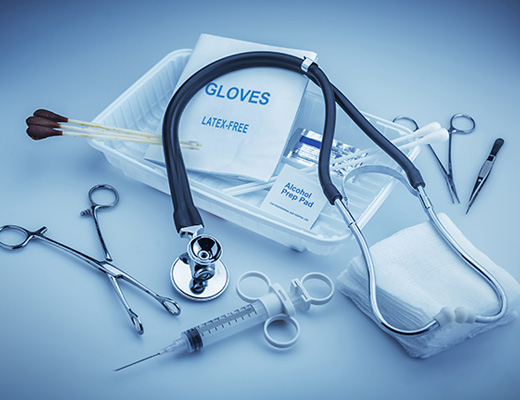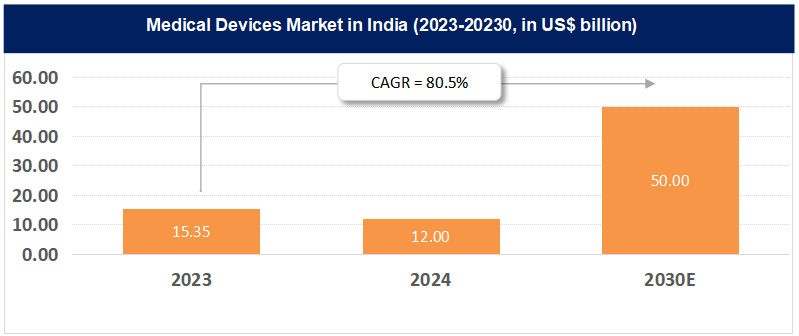Advantage India
Increasing
Demand
*Rising number of medical facilities will boost the demand for medical devices in the market.
*The medical technology sector in India is projected to reach Rs. 4,33,150 crore (US$ 50 billion) by 2030.
*Diagnostic equipment market to reach to Rs. 51,978 crore (US$ 6 billion) by 2027, up from Rs. 34,652 crore (US$ 4 billion) in CY23.
Opportunities
in Export
*The Indian medical device market is driven by 70-80% imports from countries such as the US, China and Germany.
*India and Russia have set the bilateral trade target at Rs. 260,880 crore (US$ 30 billion) by 2025. Trade is expected to increase by an additional Rs. 43,480 crore (US$ 5 billion) per annum, with opportunities in pharmaceuticals & medical devices, minerals, steel, and chemicals.
*India's medical technology industry is poised to reach exports of up to Rs. 1,69,000 crore (US$ 20 billion) by FY30, according to the Confederation of Indian Industry (CII).
Policy
Support
*Comprehensive policy support through the National Medical Device Policy 2023, PLI & MDP schemes, cluster assistance, HR development, standards, export promotion, and PPPs is driving growth in India’s MediTech sector.
*100% FDI is allowed in the medical devices sector In India. Categories such as equipment and instruments, consumables and implants attract the most FDI.
*In May 2023, Export Promotion Council for Medical Devices was established under the Department of pharmaceuticals, with its headquarters in Noida.
Increasing
Investments
*Union Chemicals and Fertilisers Minister Mr. JP Nadda launched a Rs. 500 crore (US$ 59.24 million) scheme to boost India's medical devices industry, focusing on manufacturing key components, skill development, clinical studies support, common infrastructure, and industry promotion.
*FDI inflow in the medical and surgical appliances sector between April 2000-March 2025 stood at Rs. 27,458.82 crore (US$ 3.91 billion).
*In the Union Budget 2025-26, Rs. 99,858 crore (US$ 11.48 billion) was allocated as a budget for the healthcare sector.
Medical Devices Clusters
- Gujarat
- Maharashtra
- Karnataka
- Haryana
- Andhra Pradesh
- Tamil Nadu

Posters
MORE
INDIAN MEDICAL DEVICES
India is among the top 20 markets for medical devices worldwide.
IBEF Campaigns
MORE
Aatmanirbhar Bharat Utsav 2024
Union Minister of External Affairs, Dr. S. Jaishankar and Union Commerce an...
Case Studies
MOREIBEF BLOG
MORERevival of India’s Forgotten Superfoods: Jackfruit, Amaranth and Moringa in Global Diets
For centuries, Indian kitchens have been home to an incredible diversity of...
Next-Gen GST: Powering India’s Investment and Demand Surge
India’s recent Goods and Services Tax (GST) overhaul is more than a s...
Transforming Spaces: The Growth and Opportunities in India’s Home Décor Industry
India’s home décor industry is evolving into one of the most d...














